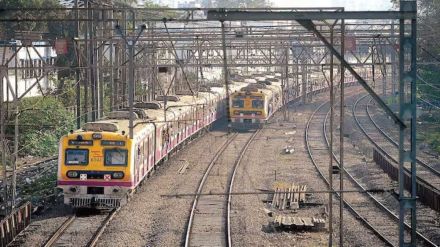Union Minister Arjun Munda on Wednesday (August 9) informed that there has been a substantial reduction in train accidents over the years. The Union Minister said the number of train accidents in the country have dropped sharply from 473 in the fiscal year 2000-01 to just 48 in the fiscal year 2022-23.
During a press briefing, Munda highlighted that the average annual count of train accidents from 2004 to 2014 was 171. However, this figure saw a notable decrease to an average of 71 per year in the subsequent period spanning from 2014 to 2023.
“Analyzing the trends over the past 20 years reveals a sharp drop in train accidents, plummeting from 473 during the fiscal year 2000-01 to merely 48 in the fiscal year 2022-23,” Munda said.
Indian Railways taking crucial steps to ensure safety
Munda also emphasised the pivotal role of the Indian Railways in the nation’s economy and its significance as a reliable mode of transportation connecting every corner of the country. He further elaborated that the Railways has undertaken a series of crucial measures to enhance the safety of train operations.
These include the introduction of the Rashtriya Rail Sanraksha Kosh (RRSK) in 2017-18, a fund dedicated to the replacement, renewal and enhancement of crucial safety assets. This corpus of Rs 1.08 lakh crore for five years has facilitated substantial progress, the minister said.
The national transporter has also implemented electrical and electronic interlocking systems at 6,427 stations, effectively mitigating the potential for accidents caused by human error.
Additionally, safety has been intensified by interlocking of level crossing gates at 11,093 locations, the completion of track circuiting at 6,377 stations, and the equipping of all locomotives with vigilance control devices to ensure the alertness of loco pilots.
To combat challenges posed by foggy conditions, the Indian Railways has introduced GPS-based fog safety devices for loco pilots which has enabled them to gauge distances to approaching landmarks. Moreover, modern track structures have been embraced for enhanced safety during primary track renewals.
The process of track laying has been mechanised to minimise human errors and longer rail panels are being used to expedite rail renewal and reduce joint welding, thereby improving safety, Munda said.
